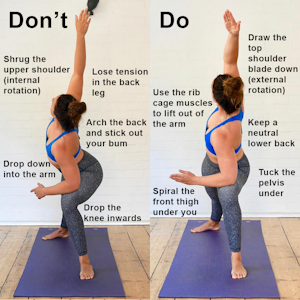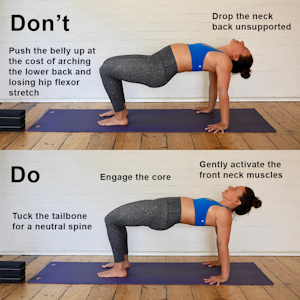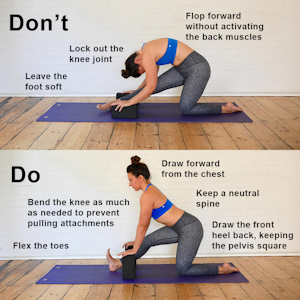The harmony of strength and flexibility make yoga the graceful and powerful practice that attracts so many of us. This week, we sat down with PYC teacher Sophia Butler-Cowdry to learn how we can use them better. Sophia has an acute eye for detail, and grounds her teaching in a deep knowledge of functional anatomy. She’s our first port of call to help refine our postural technique.
When we think about strength, we often simply imagine force and muscular bulk. However, Sophia interprets strength in yoga in a broader manner, connecting mind and body more effectively.
It’s not just about finding strength in the target muscles for a given pose, but in the bigger supporting group of muscles. For Sophia, it’s about connecting with a part of your body that you may not be used to tapping into for each movement.
A good example would be taking High to Low Plank. At first glance, an observer might think it’s a tricep strength pose; that it’s simply your triceps being extended into their lengthened position and held in strength. However, if we start to use the big group of muscles down the side of the ribs (which supports the shoulder blades and spine), you’re taking some of the stress away from the arms and shoulder joint. This creates a more distributed strength pose, keeping the shoulders safe and protecting the delicate muscles of the rotator cuff. At the start, this might feel quite intense, but over time the pose starts to feel lighter. Once you’ve got that mind-body activation using a bigger group of muscles, these poses become all-over body experiences in a safer, more holistic way.



Flexibility, similarly, can be easily mistaken. It’s incredibly important to distinguish flexibility in the muscles from mobility in the joints, Sophia explains. The joints are held together by weak structures: tendons, ligaments and joint capsules. In yoga, we want to work flexibility into the belly of the muscles: true flexibility.
Depending on lifestyle, people may have shortened or tightened the belly of the muscles. This is where yoga can really help – by releasing tension and allowing them to move more freely. By including strength in our practice as well, we support sustainable joint mobility. Sophia emphasises that it’s important the poses challenge mobility, but that joints remain stable. This means we don’t push too far beyond safe (‘normal’) ranges of motion too often, to maintain joint health in the long term.
Some individuals have greater joint mobility (through practice or genetics), giving the appearance of greater flexibility. But, if this is not balanced with strength and stability in any given pose, they can go beyond safe ranges of motion (causing compression and potentially injury), using their joint mobility as a way to come off-stretch. Sophia sees this habit most in the lower back: people might over-arch the lower back to come off groin stretch or off hip flexor stretch. She recommends going less deep into the pose and maintaining torso stability to stretch the target muscles more efficiently.
Sophia teaches regular classes at PYC, packing them full of postural refinements like these. To find your own perfect balance between strength and flexibility, we welcome you to book yourself in!